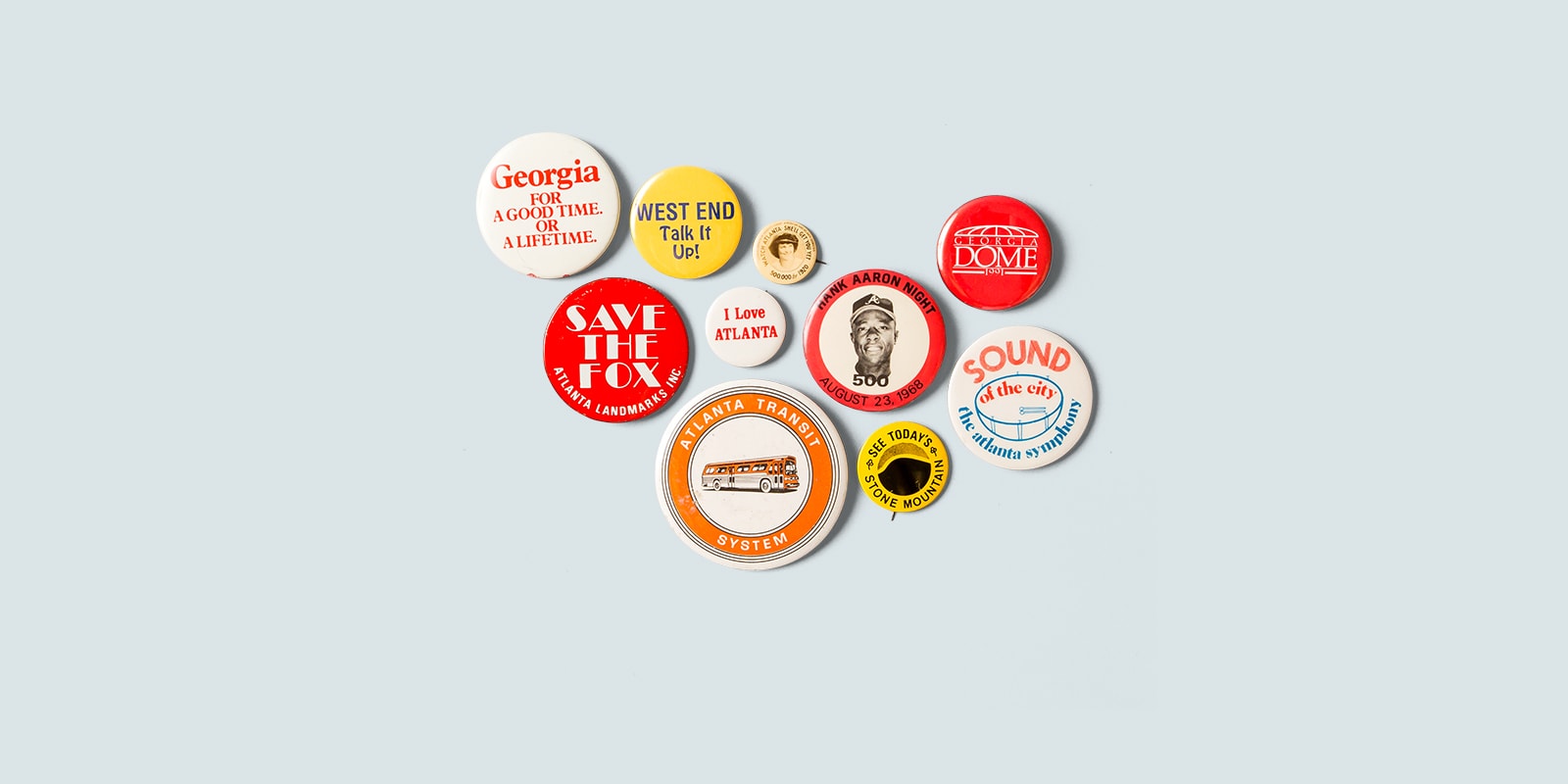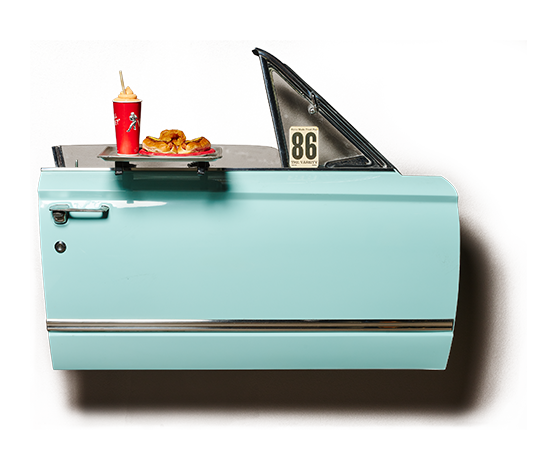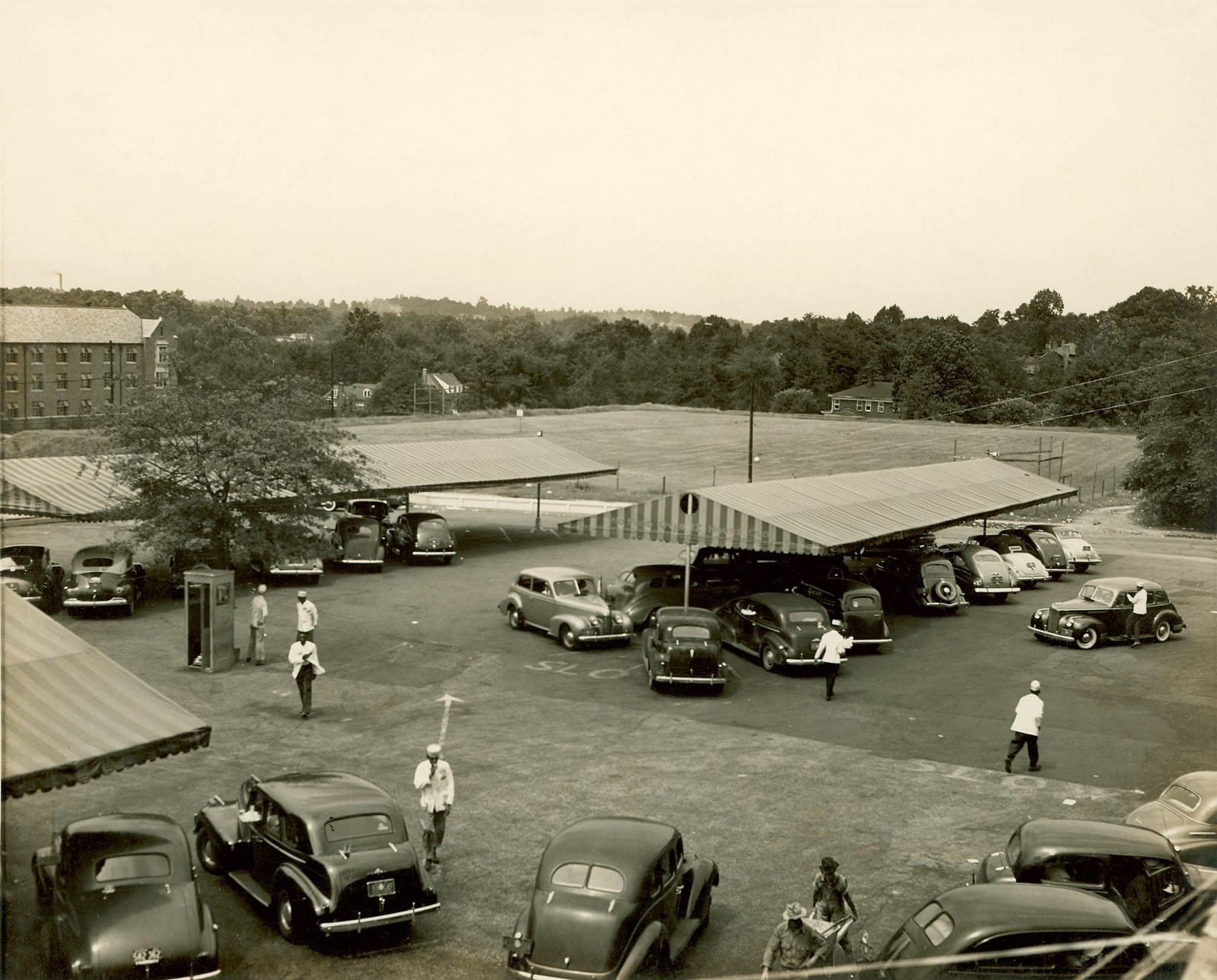Atlanta in 50 Objects
A pink pig and a renegade cow. A movie prop and a Coke bottle. A Pulitzer Prize–winning book and a Nobel Prize–winning icon.
How do you tell the story of Atlanta in 50 objects? We decided the best experts were Atlantans themselves—residents who cheer the Braves and rue I–285 rush-hour traffic, who understand how Civil War losses and Civil Rights victories together helped forge the city’s unique identity. Atlanta History Center asked the public to submit what objects they think best represent their town. The parameters were broad: an object could also be a person, a place, an institution, or an idea. After receiving hundreds of submissions, History Center staff assembled a collection of fifty pieces that represent the themes identified by the public. In addition to items from our own collections, we have partnered with many local institutions and individuals to gather artifacts from around the city to tell this community–driven story.


The Varsity
Frank Gordy opened the Varsity as “The Yellow Jacket” in 1928, catering to students of nearby Georgia Tech.
Eighty-eight years later, the Varsity claims to be the “world’s largest drive-in” and is a must-do for locals, tourists, and visiting dignitaries. Everyone is still greeted with the Varsity’s signature welcome, “What’ll ya have?” and on game days the restaurant serves over 30,000 people.
Over the years, the drive-in’s “curb men” have become part of the Varsity experience. The most famous was Flossie Mae who sang the menu to customers for fifty years. Television and movie star Nipsy Russell got his start at the Varsity as car hop #46.
The ordering lingo for this Atlanta icon is another part of its charm:
Naked dog walking – plain hot dog on a bun
F.O. – frosted orange
P.C. – plain chocolate milk always served with ice
Glorified steak – hamburger with mayo, lettuce, and tomato
But the Varsity is perhaps best known for its chili dogs and onion rings.

Curb men attend to hungry customers under the canvas awnings at the drive-in, 1941. Courtesy of Lane Brothers Photographs, Special Collections and Archives, Georgia State University, Atlanta

Curb men attend to hungry customers under the canvas awnings at the drive-in, 1941. Courtesy of Lane Brothers Photographs, Special Collections and Archives, Georgia State University, Atlanta